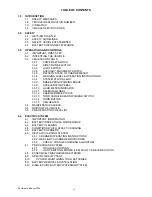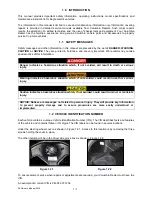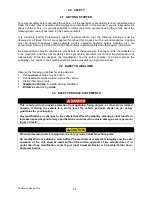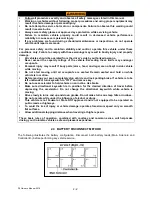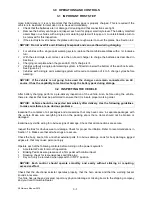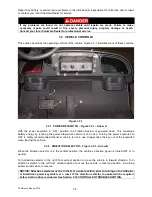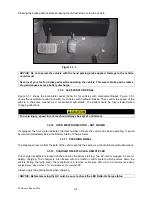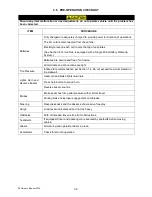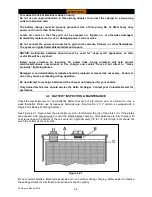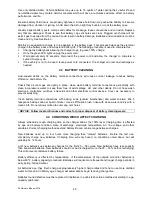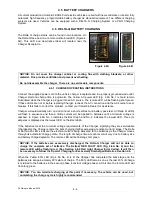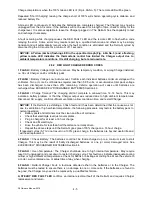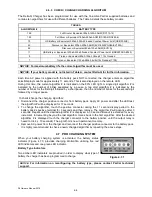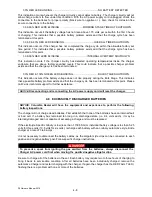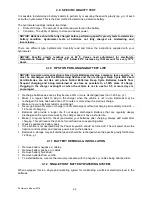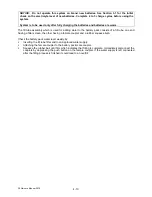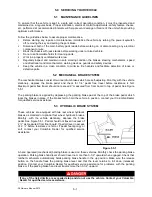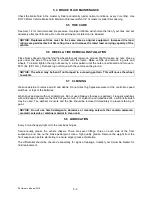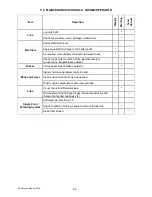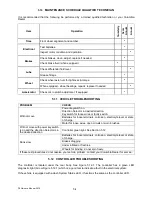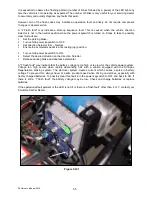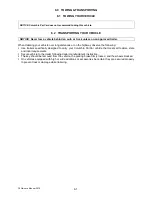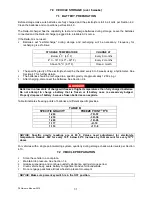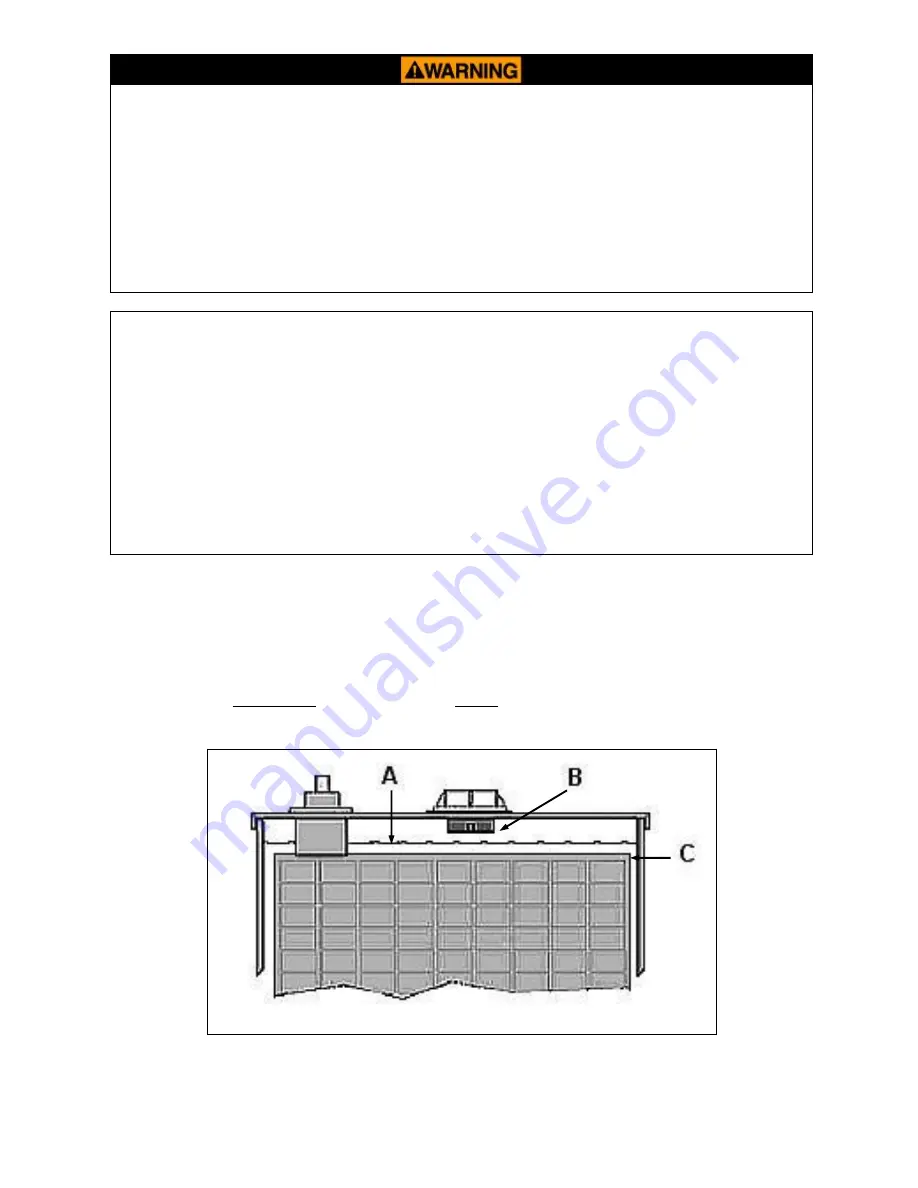
P4
Owner’s Manual 2015
To reduce the risk of electrical shock or injury:
Do not use an ungrounded two to three-prong adapter to connect the charger to a two-prong
outlet or extension cord.
The battery charger must be properly grounded. Use a three prong No. 12 AWG heavy duty
power cord n more than 50 feet long.
Locate all cords so that they will not be stepped on, tripped on, or otherwise damaged.
Immediately replace worn, cut, or damaged power cords or wires.
Do not connect the power cord near fuels, grain dust, solvents, thinners, or other flammables.
The spark can ignite flammable materials and vapors.
NOTICE:
Automotive batteries should never be used for "deep cycle" application, as their
useful life will be very short.
Install surge arrestors on incoming AC power lines. Surge arrestors will help protect
electrical/electronic components in the charger and vehicle from all but direct or “close
pro
ximity” lightning strikes.
Damaged or corroded battery terminals should be replaced or cleaned as necessary. Failure to
do so may cause overheating during operation.
Do not attempt to recharge batteries with a charger not designed for your vehicle.
Only trained technicians should service the Delta Q charger. Contact your Columbia Dealer for
assistance.
4.2 BATTERY INSPECTION & MAINTENANCE
Check the electrolyte level on new batteries before they are put into service, and, at a minimum, once a
week thereafter. Water use increases as batteries age. (See Section 4.11 if vehicle is equipped with a
Single Point Battery Watering System.)
See Figure 4.2.1. Never allow the electrolyte level (A) to fall below the top of the plates (C). If the plates
are exposed, add only enough to cover the plates before charging. After batteries are fully charged, fill
cells to just below the bottom of the cell vents (B),
approximately 1/8” to 1/4”. Electrolyte level should not
touch the bottom of the cell vents.
Do not overfill batteries. Electrolyte expands and can overflow during charging. Water added to replace
the spillage dilutes the electrolyte and reduces its specific gravity.
Figure 4.2.1
4-2

